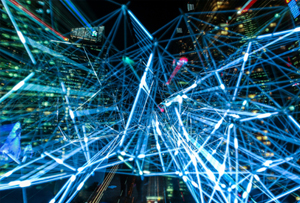![]() 5 minute read
5 minute read
There is a large difference of what people ate, how did they eat, and what were the dining traditions a century ago and today. While the basic need is to satisfy the nutrition of the body, the eating habits change every decade. Moreover, personal diet changes with age and the nutrition difference in different localities. So what is the future of food under urbanization, globalization and technological development?
Paleo diet
meat-centricity?
The world was altered before the time agriculture was developed, 10,000 years ago the only way of feeding self or the tribe was hunting, gathering, and fishing. Agriculture was one of the first massive global disruption, followed by industrialization in the last century. Agriculture transformed the living, communication and position of the human in the society. Besides the economic process, the eating habits have changed drastically. Nowadays, when we look in the future, the most noticeable and impactful characteristic to change the global nutrition is that by 2050 world will have to feed 2 billion more people than today. So how the nutrition will shift under those circumstances?
Some people argue for the bright future of Paleo diet – as it is “the one and only diet that ideally fits our genetic makeup”. Loren Cordain, an author of the book The Paleo Diet: Lose Weight and Get Healthy by Eating the Foods You Were Designed to Eat, argues that consuming the lean meat, fish, and vegetables, just like our hunter-gatherer ancestors did, humanity will be able to avoid “the diseases of civilization”, such as heart disease, high blood pressure, diabetes, and cancer. But is the meat-centric diet that natural for a human? According to biological anthropologist Clark Spencer Larsen of Ohio State University, during the farming period, diets became far less nutritionally diverse with the concentration on crops. Human diet changes with the lifestyle and world development. Human skull, bones, faces have gotten smaller, at the same time the DNA has changed since the invention of agriculture. Therefore, Loren’s claim is not that accurate. The trends shape the nutrition need and diet . Today, one of the main trends that will impact the daily menu is the population growth and climate change.
Cowspiracy
Animal agriculture is responsible for 18 percent of greenhouse gas emissions, more than the combined exhaust from all transportation. – Fao.org. Spotlight: Livestock impacts on the environment.
Livestock and their byproducts account for at least 32,000 million tons of carbon dioxide (CO2) per year, or 51% of all worldwide greenhouse gas emissions.
Goodland, R Anhang, J.
Emissions from agriculture are projected to increase 80% by 2050. David Tilman [&] Michael Clark
These are just a couple of facts gathered by producers of “Cowspiracy: The Sustainability Secret” – the documentary revealing the disruptive effect of livestock cultivation to the climate of the planet. The funds for the documentary were crowdfunded on IndieGoGo and the final cut version of the film was executive-produced by Leonardo DiCaprio. The filmmaker Kip Andersen has gathered a statistical evidence and a dozen of expert opinions for the movie. Besides exposing the striking impact of livestock agriculture to the environment, “Cowspiracy” provides some of the recommendations for the issue. Reducing the meat consumption is one of the solutions. And academical research confirms that it is a real opportunity for the future of nutrition.
The study “The future of meat consumption — Expert views from Finland” by Finland Futures Research Centre shows that the meat consumption is expected to drop from 72 kg per person per year to 66 kg by 2030. There are several strategies influencing the change in the diet. First, the technological development offering the substitution of products that originate from animals. Second, rising numbers of campaigns that increase awareness of animal rights and vegetarianism. And the last, government regulations promoting the larger selection alternatives to meat in the grocery stores and increased taxation to meat production.
Meal replacement
as a future nutrition
The next trend impacting the food and its consumption is the technological development. It is predicted that the meal replacement will rocket in the next couple of decades, if not earlier. For current generation of baby boomers and partially for millennials, this idea might feel futuristic and give a discomfort. Similar to Google Glasses, this invention is targeted for Gen-Z. Meal replacements provide daily nutrition norm in forms of supplements, powders or ready-to-consume drinks. One of the examples is the Soylent. The company produces a beverage that can substitute an entire meal. This meal replacement drink has all the nutritions needed for a human body and has no animal component.
Why Soylent is important? The meal-replacement products are cheaper than eating out. It is easier to provide the body with needed elements with the lifestyle-on-go. And, of course, it is easy. Ultra-efficient nutrition. On the other hand, the taste and variety still lack being attracting. Nevertheless, even if such product today feels as alien as Google Glass, the future when there is a shortage of food prepares next generation for efficient food consumption. Soylent does not provide the social experience of food consumption. And that when comes a new experience with dining out.




